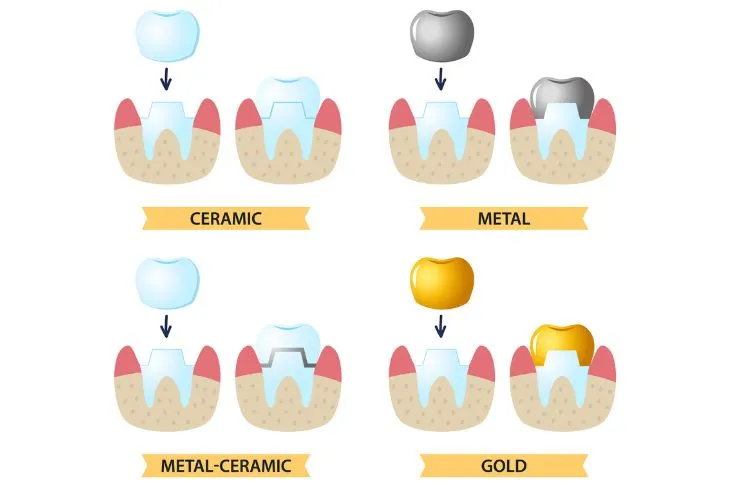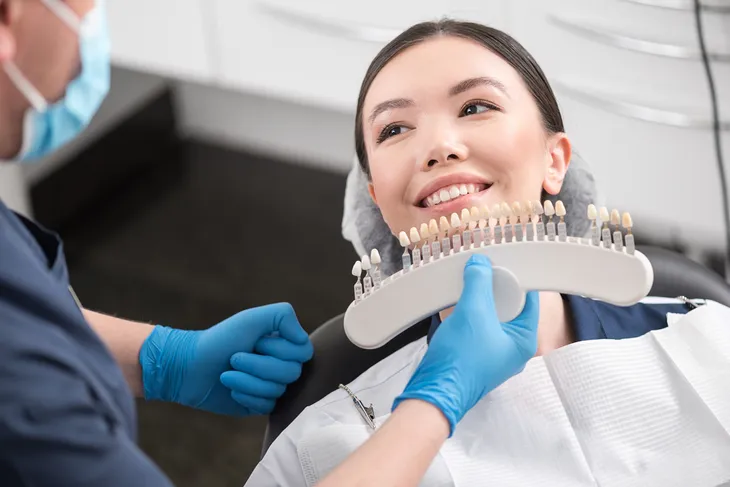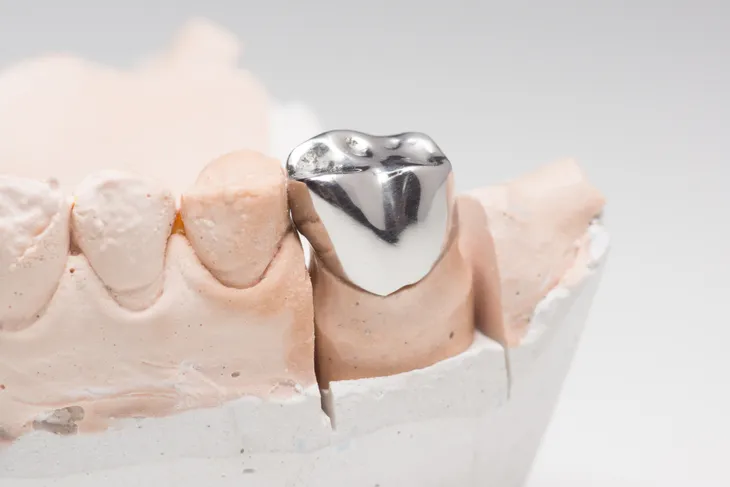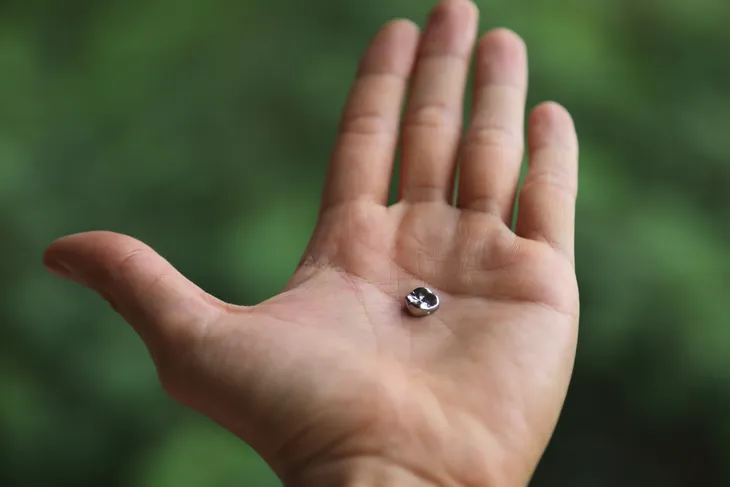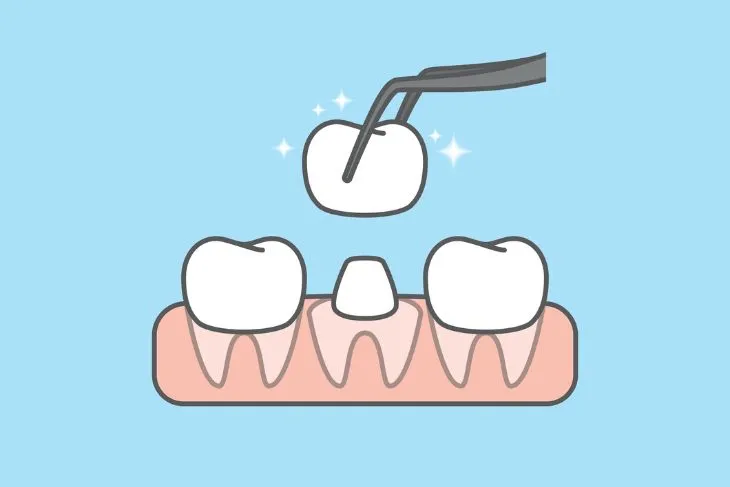- A dental crown is a tooth shaped cap placed over a tooth to restore its shape, size, strength and appearance. It’s cemented into place and fully encases the original tooth.
- The different types of crowns mainly revolve around what type of material they are made from: metal, porcelain-fused-to-metal, all-resin, all-ceramic, or all-porcelain.
- You’ll need to separate appointments for the crown. First to examine and restore the tooth. The second appointment will be when the crown is installed.
- People with a dental crown are expected to follow the same good oral hygiene practices in order to prevent decay and gum disease.
While they are often hidden in our mouth, our teeth are one of the most prominent features of our body. We flash them every time we smile or talk, then of course we use them every day, all day long in order to eat. Needless to say, they are quite important! This is why it’s imperative we take good care of them.
Unfortunately, because we use our teeth so much, they go through a lot of wear and tear which can result in damage. Thankfully, just because a tooth is damaged doesn’t mean it’s gone! In some cases, dentists are able to salvage the tooth by using a dental crown. These are used to restore a tooth’s shape, appearance, and function. Before getting one, take a moment to read up on some basic need-to-know details about dental crowns…
Why Do I Need a Crown?
While our teeth are very strong, they are susceptible to damage. This can happen for a variety of different reasons including tooth decay, injury, or just everyday wear and tear. According to the Cleveland Clinic, a dental crown is a tooth shaped cap that is placed over the tooth to restore its shape, size, strength and appearance. It’s cemented into place and fully encases the original tooth.
The same source goes on to explain who typically receives a dental crown. They are used to protect a weak (possibly decaying) tooth from breaking, cracking, or if it’s already cracked. It can restore a broken tooth or one that is severely worn down. A crown can hold a dental bridge in place, cover and support a tooth with a large filling, cover a dental implant, a misshapen or severely discolored tooth, as well as one that has been treated with a root canal.
Different Types of Crowns
There are several different types of crowns which mainly revolve around what type of material they are made from. The type of crown a patient receives largely depends on which tooth needs the crown. Once that is determined, a dentist will make their recommendation of which type of crown (or combination of materials) is best, explains the Canadian Dental Association.
Metal crowns are made from gold. This type is long lasting and will not chip or break. It will also not wear down the opposing natural teeth, notes the source. However, most people prefer a much more natural look, especially if the tooth that needs repairing is near the front of their mouth. The more natural looking crowns are composite, porcelain, and porcelain-fused-to-metal crowns.
According to the Canadian Dental Association, a composite crown won’t chip as easily as a porcelain crown, but they wear down faster. Also, brushing can remove the highly polished surface making them more vulnerable to stains. Porcelain crowns are the most natural looking, but they are more brittle than metal and composite so they will chip more easily. For this reason they are often not used on the back teeth, notes the source. Lastly, porcelain-to-metal crowns are natural and stronger than porcelain and composite, but depending on the design they may show if the persons gums as thin or even shrink.
Less common and less expensive option are all-resin crowns. These aren’t as common because they wear down faster and are more prone to fractures, says WebMD. There are also temporary crowns versus permanent crowns. “Typically, temporary crowns are made of an acrylic-based material or stainless steel and can be used as a temporary restoration until a permanent crown is constructed,” writes WebMD.
What is an Onlay or 3/4 Crown?
In addition to different types of materials used for crowns, there are also onlays and 3/4 crowns. These are exactly what they sound like. These are crowns that don’t cover as much of the underlying tooth as a traditional crown which covers the entire tooth.
An onlay or 3/4 crown is considered a more conservative approach and can only be used if there is still enough solid tooth structure to build off, says the Cleveland Clinic. So it’s not an appropriate option for everyone. If someone is having this procedure done, the dentist will remove the part of the tooth that is affected and perform a reshaping of the tooth in order to receive the crown, explains the source.
Dental Crown Procedure: First Visit
The process of getting a dental crown often involves two visits to the dentist office. The first visit involves examining and preparing the tooth. The second will be the placement of the permanent crown, explains WebMD. X-rays will check the roots of the tooth and the surrounding bone. If there is an extensive decay or risk of infection or injury to the tooth’s pulp, the dentist will likely have to do a root canal first, says WebMD.
Before they begin to make the crown, a dentist will numb the tooth and gum tissue. “Next, the tooth receiving the crown is reshaped along the chewing surface and sides to make room for the crown,” writes WebMD. The amount removed depends on the type of crown. People who are missing large areas of their tooth due to decay or damage will need a filling material to “build up” the tooth in order to support the crown, adds the source.
After the reshaping, the dentist will use a paste or putty to make an impression of the tooth. These can also be done with a digital scanner. An impression of the surrounding teeth will help make sure the crown doesn’t affect your bite. These are sent off to a dental lab to manufacture the crown (approx. 3-weeks). If the crown is made of porcelain, the dentist will select a shade that best matches the surrounding teeth. You’ll receive a temporary crown until the permanent one is finished.
Dental Crown Procedure: Second Visit
The next step of the procedure is a second visit to the dentist where they will remove the temporary crown. The permanent crown will be ready at this point, so they will take it out and examine to make sure that it fits properly and the color matches well with the surrounding teeth.
If it all looks good, a local anesthetic (“numbing” drug) will be used to numb the tooth so that the permanent crown can be cemented into place, says WebMD.
Same-Day Dental Crowns
Some dentists have the equipment to make crowns in their office right then and there. If this is the case, the Cleveland Clinic explains that the process is quite similar. A dentist will begin by removing any decaying parts of the tooth and shape it so that it will fit perfectly inside the crown.
It’s the next step that is different. “In the same-day procedure, a scanning device (a “wand”) is used to take digital pictures of the tooth inside your mouth,” writes the source. The computer software will make a 3D model of the tooth from the pictures taken and then a digital design is sent to another office where the machine carves the shape of the crown out of a ceramic block. “This method of making a dental crown is called computer-aided design/computer-aided manufacturing (CAD/CAM),” adds the Cleveland Clinic. In most cases, the crown is ready in less than 15-minutes.
How to Care for a Crown
A tooth with a crown doesn’t necessarily require special care, but you will need to follow good oral hygiene practices. There is still a tooth underneath the crown that needs proper care to prevent decay or gum disease. You will need to brush your teeth twice a day and floss at least once a day. Take extra care of the area around the crown where the gum meets the tooth, notes the Cleveland Clinic.
When it comes to protecting the crown itself, avoid biting on hard surfaces. This is especially true if the crown is porcelain. The source advises not chewing ice or popcorn hulls to avoid cracking the porcelain crown.
Complications: Chipped, Loose, or Crown Falls Off
Crowns are a great solution to a tooth with decay or damage. However, just like our teeth, they are susceptible to everyday wear and tear. Certain types of crowns are more susceptible to chips. The most notable are all-porcelain crowns. If the chip is small a dentist can likely repair it with a composite resin. This is just a temporary fix. If the chipping is extensive, WebMD warns the entire crown may have to be replaced.
In more severe cases a crown can come loose or fall off entirely. This can happen if the tooth underneath starts to decay or there isn’t enough cement to hold it down, notes the source. If a crown falls off, make sure to keep the area clean. You can mend the crown temporarily with dental adhesive or tooth cement, then contact a dentist immediately. They can offer specific instructions on how to care for the tooth until it can be re-cemented or replaced.
Complications: Discomfort, Sensitivity, or Allergic Reaction
According to Healthline, it’s not unusual for a crowned tooth to be quite sensitive to heat or cold. While this is normal, if it’s also sensitive to pressure when biting down, it might mean the fit is off. Consult a dentist to adjust the placement of the crown or on filling the top of the crown.
While it’s not common, in fact WebMD notes that it’s extremely rare, some people can experience an allergic reaction. This is often due to the mixture of metals in some crowns. Some people will have an allergic reaction to the metals or porcelain used in their crown.
Why is There a Dark Line?
This isn’t a complication of dental crowns, but some people might notice a dark line next to the gum line of the crowned tooth. WebMD assures this is totally normal, especially for people who got a porcelain-fused-to-metal crown. The dark line that appears is simply the metal from the crown showing through the gums.
The same source also notes that while it’s not necessarily something to worry about, it should be brought to the attention of your dentist. A dark line showing on the gums is “cosmetically unacceptable” and may need to be swapped out for an all porcelain crown or ceramic one.
How Long Do They Last?
The average lifespan of a dental crown is anywhere from 5 to 15 years. It all depends on how much wear and tear they encounter, the material they are made of, and what tooth the crown is on. Other factors that can impact the longevity are how well a person follows their personal hygiene practices and personal mouth-related habits. These include grinding or clenching teeth, chewing ice, biting fingernails, and using teeth to open packaging, says the Cleveland Clinic.
The biggest determinator is the material as some crowns are sturdier than others, notes Healthline. Crowns made out of gold or porcelain-fused-to-metal tend to last the longest. All ceramic and all-porcelain crowns look the most natural, but they are not as strong and all-resin crowns wear the fastest.
How Much Do Dental Crowns Cost?
The cost of a dental crown largely depends on the country and whether or not they have dental insurance. Another factor is the type of dental crown a person is getting. According to WebMD, they generally range from $800 to $1700 per crown. If a person has insurance, a portion of that will likely be covered.
A gold crown is the most expensive and all-metal crowns are the most affordable (often cheaper than gold and porcelain) since they are made of a metal alloy. Healthline notes that costs could increase depending any prep work that needs to be done by the dentist. For example, if a patient needed a root canal or dental implant in addition to the crown. All patients should talk to their dentist about what type of crowns are available and most appropriate, as well as their insurance company about what is and isn’t covered.


